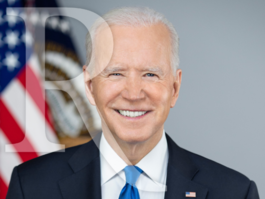45% View Health Care Law Favorably, 49% Unfavorably
Unfavorable reviews of the new national health care law have fallen below 50% for the first time in several months, but voters more strongly than ever support individual choice when it comes to determining how much health insurance someone needs to buy.
A new Rasmussen Reports national telephone survey finds that 45% of Likely U.S. Voters have at least a somewhat favorable opinion of the health care law, while 49% view it unfavorably. This includes 23% with a Very Favorable opinion and 38% with a Very Unfavorable one. (To see survey question wording, click here.)
This marks the highest number of voters with a Very Favorable opinion in surveys all year, while those with a Very Unfavorable one remain consistent with findings since early May. Overall unfavorables are down from 53% last month and are in the 40s for the first time since April.
Seventy-three percent (73%) of Democrats continue to view the new law favorably, while 80% of Republicans and 52% of voters not affiliated with either major party share an unfavorable opinion of it.
Voters remain closely divided when asked if the government should require every health insurance company and health insurance plan should be required to cover the exact same set of medical procedures. Thirty-six percent (36%) say yes, down six points from a high to date of 42% in early September. Thirty-three percent (33%) say no, while nearly as many (31%) are undecided.
Seventy-six percent (76%) of voters believe individuals should have the right to choose between different types of health insurance plans, including some that cost more and cover just about all medical procedures and some that cost less while covering only major medical procedures. That’s up five points from a month ago and the highest level of support to date. Just 10% disagree, with another 15% who are not sure.
Even more emphatically, 87% think individuals should have the right to choose between different types of health insurance plans, including some with higher deductibles and lower premiums and others with lower deductibles and higher premiums. This marks an eight-point increase from the previous survey and is also a new high for the year. Only four percent (4%) don’t believe individuals should have that right to choose.
Special offer : A Rasmussen Reader subscription that lasts through December 31, 2014 is now just $24.95. Sign up today!
(Want a free daily e-mail update? If it's in the news, it's in our polls). Rasmussen Reports updates are also available on Twitter or Facebook.
The survey of 1,000 Likely Voters was conducted on October 4-5, 2013 by Rasmussen Reports. The margin of sampling error is +/- 3 percentage points with a 95% level of confidence. Field work for all Rasmussen Reports surveys is conducted by Pulse Opinion Research, LLC. See methodology.
Just prior to last Monday’s federal government shutdown, 46% of voters favored such a shutdown until spending for the new health care law was cut, but that was down from 51% two weeks earlier. Forty-five percent (45%) wanted to avoid a shutdown last week by authorizing spending for the law at existing levels.
Essentially unchanged from surveys all year is the 71% of voter support for allowing employers and individuals to buy health insurance across state lines. Supporters of this idea argue that the increased competition will drive down prices to consumers. But 14% disagree and think employers and individuals should only be allowed to buy plans approved for their state. Fifteen percent (15%) are undecided.
Younger voters continue to view the health care law more favorably than their elders. Senior citizens remain its harshest opponents.
Black voters overwhelmingly favor the health care law, as do just over half of other minority voters. Most white voters still view it unfavorably.
But there’s little partisan disagreement when it comes to consumer choice for the purchase of insurance plans. Republicans and unaffiliated voters, however, are stronger supporters of buying across state lines than Democrats are.
Those who favor the law are less supportive of individual choice than those who oppose it.
Eighty-five percent (85%) of voters who say they are part of the Tea Party view the health care law unfavorably. Fifty-five percent (55%) of those who are not part of the grass roots movement have a favorable opinion of it.
The law is viewed favorably by 64% of the Political Class but unfavorably by 59% of Mainstream voters.
Thirty percent (30%) of all voters believe the nation’s health care system will get better under the new law. Fifty-one percent (51%) still think the law will make the health care system worse.
One-out-of-two voters continues to oppose the law’s requirement that every American have health insurance.
Most voters still predict that the law will cost more than projected and will increase, not reduce, health care costs. From the beginning of the debate over the law four years ago, voters have consistently said that cost is their number one health care concern.
Health care ranks second only to the economy in terms of importance to voters going into next fall’s congressional elections. Voters remain evenly divided over which political party they trust more to handle health care issues.
Additional information from this survey and a full demographic breakdown are available to Platinum Members only.
Please sign up for the Rasmussen Reports daily e-mail update (it’s free) or follow us on Twitter or Facebook. Let us keep you up to date with the latest public opinion news.
The survey of 1,000 Likely Voters was conducted on October 4-5, 2013 by Rasmussen Reports. The margin of sampling error is +/- 3 percentage points with a 95% level of confidence. Field work for all Rasmussen Reports surveys is conducted by Pulse Opinion Research, LLC. See methodology.
Rasmussen Reports is a media company specializing in the collection, publication and distribution of public opinion information.
We conduct public opinion polls on a variety of topics to inform our audience on events in the news and other topics of interest. To ensure editorial control and independence, we pay for the polls ourselves and generate revenue through the sale of subscriptions, sponsorships, and advertising. Nightly polling on politics, business and lifestyle topics provides the content to update the Rasmussen Reports web site many times each day. If it's in the news, it's in our polls. Additionally, the data drives a daily update newsletter and various media outlets across the country.
Some information, including the Rasmussen Reports daily Presidential Tracking Poll and commentaries are available for free to the general public. Subscriptions are available for $4.95 a month or 34.95 a year that provide subscribers with exclusive access to more than 20 stories per week on upcoming elections, consumer confidence, and issues that affect us all. For those who are really into the numbers, Platinum Members can review demographic crosstabs and a full history of our data.
To learn more about our methodology, click here.





